
In this interview with Patapon's producer and sound designer, we discuss the mysterious identity of the voice behind the theme song, the sound design process, and shed light on a whole load of mysteries!
The googly-eyed Patapons march to the rhythm of the drum! First released in 2007 to worldwide critical acclaim, a remastered edition is out today on PlayStation 4.
Described by its creators as “Command & Carnival”, Patapon is a mash-up of strategy, simulation and music game elements. In order to reach the end of the earth and defeat the foes that stand in their way, the player commands their little guys to march, fight and much more, just by beating a drum rhythm. This hit series’ three games made their way into players’ hearts with their addictive blend of rhythmic drumming, strategic character development and troop composition, and of course, the characterful, lively little Patapons themselves.
4K image captured on PS4 Pro. 4K display requires PS4 Pro and compatible 4K display
We interviewed producer Hiroyuki Kotani and Sound Designer Kemmei Adachi prior to the game’s release, where we discussed the sound design process, the secret identity of the theme song’s singer, and shed light on a whole load of the game’s secrets.
Hiroyuki Kotani, Producer (left) and Sound Designer Kemmei Adachi (right)
The Inspiration for Patapon Striking like a Bolt of Lightning
Patapon was originally released for PSP in 2007. Can you tell us about the process that led to its creation?
Kotani: The first step on the road was when I saw a character design by Rolito, the French artist. One day, I was visiting the offices of Interlink Planning, who did overseas artist management including Rodney Greenblat of PaRappa the Rapper fame. They showed me a piece of work from an artist called Rolito which had done in Flash. I was completely taken aback! Loads of these alien little creatures that were basically just eyeballs waving spears around. They were these simple characters, made only of circles, no ornamentation. On a gut level, I felt drawn to them and told the company I was interested in his work.
The illustration by Rolito, full of the then unnamed little eyeball creatures that would inspire Patapon.
It was around the launch of the PSP, and plenty of new developers were being welcomed into the fold. There was this development house called Pyramid, who were making games that really stood out, even among the new crowd. I proposed a war strategy game involving war drums to them using these characters, and right off the bat, they thought the idea had merit. That’s when I started thinking up systems for the game.
So it was then decided right away that your group would make a strategy game featuring those spear-wielding eyeball characters?
Kotani: Right. My first idea was an image of the little guys swarming into battle.
So, I’ve always liked picture books, and I’ve always wanted to create something fairy tale-esque. At the time though, I was involved in this project to discover talent through Game Yaroze! (“Let’s Make Games!”) and had to provide support to quite a few teams. I think it’s fair to say that Patapon was actually my first project that I conceived entirely from scratch.
The monsters started as drafts from the development staff, which were discussed with Rolito, who upon approving them would provide the finalised design.
From that first idea, how did you finalise the game’s systems?
Kotani: It was something of a long and winding road to get there! Our first thought, looking at the four buttons, was to consider them parts of a drum, and designate them “March”, “Attack”, and “Defend”. But make it too complex and even we would have trouble remembering the commands, while making them too simple would be boring. Looking at the rhythm action games of the time, I considered having command prompts pop up on screen to tell the players what to press, but I had this idea that the game should be about communicating with this tribe that doesn’t understand your words, so we shouldn’t place a lot of emphasis on giving commands. I rolled these ideas around in my head for what seemed like the longest time.
Around that time, Rolito came to Japan. I asked him to name the little eyeball creatures, and sometime later, he sent me around four naming conventions. I saw “Patapon” there in the list, and knew that was the one! Thinking about “pata” and “pon” as drumming noises, I envisaged drumming out “pata, pata, pata, pon,” and the creatures would start marching. From that, I knew anyone could remember the commands, and it even felt like communicating rather than commanding. I had Pyramid make a prototype right away, and after playing that build, I knew that this was what I’d wanted to make all along!
After settling on this, the rest of this part of development was much smoother. “Throw” was “pon, pon”; the remaining two buttons could be given fun sounds like “don” and “chaka”.
A screenshot from the early days
What stage of development did you join, Mr. Adachi?
Adachi: I joined pretty much at the start. I remember going to the studio when Mr. Kotani was saying, “I have this sort of idea for a game”. It was pretty rare for a Sound Designer to be present at a brainstorming session.
Kotani: Sound was absolutely essential to Patapon after all, so I wanted ideas from the sound designer! That’s why I asked you to join during the brainstorming stage!
Adachi: In the end, the concept of call and response became central to the game, but it took a lot of ideas from everyone to get there.
Kotani: We also discussed what kind of music we should use. Since we were envisioning something quite primal, drums seemed like a natural fit. We listened to a lot of drum-based music as the picture of the game became clearer in our minds. And we even… well, it didn’t have anything to do with the game in the end, but we even learnt to play the didgeridoo! (Laughs)
Adachi: There was always room for fun while making the game!
Recording Off the Cuff: Secrets of Sound Design, Revealed!
Once the basic design of the game was decided to be call and response, how did you decide on the four noises that would represent “pata”, ”pon”, “don”, and “chaka”?
Adachi: Well, we tried a load of different sounds. We wanted pressing a button and hearing the sound to simply feel good, bearing in mind “pata” and “pon” were to be the call to attack. We wanted the sounds to feel commanding as well as satisfying to hear.
What did you use to make the sounds?
Adachi: A blend of a lot of noises. Congas and bongos just on their own didn’t seem satisfying enough, so we had to come up with a signature sound for Patapon. On top of the African instrumentation in the foreground, we mixed in percussive instruments from a lot of different countries.
Kotani: Even after settling on “pon”, getting “pata” right proved quite difficult. I knew I was asking a lot when I requested the team to keep trying for something better (laughs).
Adachi: Everyone was asking a lot, eh! (Laughs)
Kotani: At first, I was quite pleased that after inputting a command, the Patapons would repeat it back to the player, but eventually I got the feeling that something was lacking. It was Pyramid who thought it might be interesting if the Patapons actually sang back to the player. I wrote the lyrics, and Mr. Adachi wrote the framework for the accompanying music.
Adachi: I just added the melody to Mr. Kotani’s lovely lyrics.
Kotani: Mr. Adachi initially wrote a very strange placeholder song for “Goroch’s Theme” that you hear at the start. Those are definitely your lyrics too, Mr. Adachi!
Adachi: The process of composition was totally different from normal. We had booked the days for recording, and I’d come up with some frameworks for pieces, knowing that Mr. Kotani was writing the lyrics. They arrived before we were due to record, and somehow, I was in the studio, adjusting the pieces as we were recording and fitting these lyrics into them! Normally, you’d start with the melody, but here I’d come to the studio without any, so it ended up being a rare instance of composing right off the cuff!
Kotani: The themes were locked down, but that was about it. This piece would feel African; that piece would feature yodelling as it was for a mountain level; etcetera (laughs).
Adachi: I would make an instrumental base, and then change the instruments out for voices to make a piece. For example, a guitar line by The Ventures would sound like “tickatickatickaticka” when expressed vocally. Vocal percussion also turns sound into words, right? Using that method, I would turn the instrumental sounds into these words and have them sung in a child’s voice. Every piece was made in this way.
Who did the singing?
Kotani: My son! (Laughs) I thought it would be fun to have children sing, but since we didn’t have the budget to hire, I asked my son to have a go. (Laughs) At the time he was about 10. We threw the little bundle of energy into the studio and asked him to sing for us!
Adachi: It was our first time doing it that way, so it was as difficult as you might expect. It was really hard to have a child maintain the energy needed. It was the summer holidays and he just wanted to play, and he got brought into the studio when he was still half asleep.
Kotani: He laid down the ya-ho-hois and woo-ha-has while listening to the backing track.
Adachi: It was all done quite spontaneously. Before working on Patapon, I’d worked on LocoRoco, which was a similar approach. My voice is actually in that game too. I got up in front of the mic and laid down some chorus and gradually added to it. Patapon ended up quite similar in terms of the method.
Kotani:. We rigged it up so my son could hear me through the mic, and I sang an improved little song based on the backing track and had him copy me. Turns out even the recording utilised call and response! (Laughs) It felt a bit like a concert.
Adachi: I remember some songs turning out completely different to the melodies that were sung because of that. Those ended up being pretty good though!
Kotani: Putting the same vocals over a chorus wouldn’t have been any good, so we split it up where we had weak Patapons, weird Patapons, and angry Patapons, etc. all singing for us. Mr. Adachi would say, “Next we’re going to do some weak Patapons, okay?” to my son, and he did it like a stone cold pro (laughs). It really helped give the feeling that there were loads of Patapons in the game.
Adachi: Once the template was completed, I’d redo my vocals. We added the musical elements together like we were putting chords together.
In a previous interview, talking about LocoRoco, the director mentioned that the greater the number of LocoRoco on screen, the fuller the sound of their singing became In Patapon, FEVER, earned by chaining a big combo together, makes the music grow more lively. Did you re-employ this method from LocoRoco?
Adachi: Exactly right. The music consisted of two mixes split into three tracks, which would respond to the state of the game.
Was that difficult, on top of your compositional duties?
Adachi: Every track has the same tempo. Marching tempo is 120BPM. It was tricky writing music to fit this. Rhythm games usually try to vary the tempo to create variety. Introducing variations at the same tempo, well, it was tricky to say the least. I had to be very careful that the tracks didn’t get too samey.
Do you have a favourite piece?
Adachi: Goroch’s Theme, I think. I also like the Patapon 2 tracks with funk elements. Whenever I got stuck, I added in my usual style of melody and got surprisingly into it.
Kotani: Bibiricchi’s Theme, from the first boss fight is also great.
Adachi: At the 23rd Game Symphony Japan Concert, celebrating PlayStation music, Patapon’s opening theme was performed live on stage. It was really moving, to have Patapon performed live!
How important do you both think music is to video games?
Adachi: I think it’s important to expand the scope of a world. Whenever I begin work on a project, I ask to see some art. Before even seeing the design documents, I look at the art and decide on a concept. Even if someone asks me for a specific kind of piece, the inspiration I take from the art will still form the base. I think this is a good way of expanding the scope. Sometimes, the music I provide has even ended up changing the direction of games I’ve worked on.
Kotani: When the player gets feedback from a game, the most satisfying stimulus usually comes from the sound and music.
Music plays an important role in three recent HD remasters; PaRappa the Rapper, LocoRoco and Patapon. Since music is tied in so closely to the gameplay, it seems players tend to recall them fondly.
Adachi: Yeah, I believe so. We focussed hard on how to represent the swarms of Patapons musically. I think we managed quite well in the end, if I do say so myself.
Kotani: It feels like each individual Patapon is singing in the game, doesn’t it? Whenever they’re marching, they would raise their spears to the rhythm. This animation wasn’t included at my behest, but actually one of the programmers made the decision to implement it independently. As soon as that animation was in the game, seeing them move and sing to the beat really gave the impression they were marching. That tiny bit of animation really brought them to life; I was totally awestruck.
The animation and the commands were really brought together by the music, and made the whole experience that much better.
Kotani: The music of Patapon is far more important than simply sound-tracking the action. Together with the visuals, they breathed real charisma into the game.
Being Bold Enough to Use “Chaka Chaka” to Win!
What feedback did you receive after release?
Kotani: It was well-reviewed, but quite a few people said the rhythm for executing “Miracles” was too difficult. The irregular “don, dodon, dodon” rhythm seemed hard for some players. I’d previously made Mad Maestro! to allow people who didn’t play an instrument to enjoy playing music in game form. The music would react to your inputs in a simple and fun manner. I wanted to make a game anyone could enjoy, but it seems I made Patapon a little too hard.
Is there any kind of trick to it?
Kotani: Mad Maestro is the same, but keeping steady to the rhythm is deceptively tricky. Especially in Patapon, where you have to keep an eye on your enemy’s movements while inputting the next command. It’s not especially forgiving; if you don’t defend when you need to, you’ll take huge damage. That’s why “chaka chaka” (the defensive command chaka, chaka, pata, pon) is so important. Don’t underestimate the value of chaka, chaka! (Laughs) You only have two seconds or so to decide whether to attack, defend, or run away, which is both Patapon’s difficulty and its greatness.
It’s all the harder to maintain the rhythm when you’re shaken up after taking damage too.
Kotani: Right! When you’re shaken up, it shows in your rhythm. Which is exactly why you need the courage to chaka, chaka in order to succeed! (Laughs)
Patapon seems popular around the world and went on to have sequels. Why do you think it became such a hit?
Kotani: The characters. I thought a certain kind of person would definitely find them immediately appealing. I remember writing in the design doc that this would be a game for adults with good taste and an interest in art. Rolito came up with the catchphrase “delicious poison” for Patapon, as there was something “poisonous” in the Patapon’s design. The visuals were also very striking, and without them, the game wouldn’t be the same.
Adachi: The scale was also great. These little beings swarming around made it really charming.
You mentioned the game being made for adults. What’s the player base actually like?
Kotani: We held a survey, which revealed that 40% of players were women and was great to hear. Most games’ user bases are 80% male. And it seems people grew really attached to the little Patapons. Different-looking Patapons debuted in Patapon 3, and while we were observing play tests, a common bit of feedback was, “Do Patapons grow up to look like that!?” I heard somewhere that “patapon” means “child” in French, and a lot of fans thought the Patapons were children. Even I think of them as my kids, and Rolito calls me “The Patapons’ other father”.
Experiencing the full power of the “Don” with the PS4
How has your impression of the game changed with the PS4 remaster?
Kotani: We did testing on PlayStation Vita, and despite the small size of the characters, they looked pretty sharp. The games live and die by the simple silhouettes of Rolito’s designs, the characters’ crispness only served to increase their charm.
Can you offer any advice to players coming to the game for the first time?
Kotani: It’s fun to try to play through the game without any outside help. Rarepons can be created once you make a certain amount of progress, which might actually happen by chance. It’s possible to create a Rarepon unknowingly while casually making a new Patapon. Have fun testing them out, seeing how they move and how they fit in with the others.
Is there anything that hasn’t yet been discovered by fans?
Kotani: Hah, I think the players have seen everything there is to see at this point! They’re far more knowledgeable about the game than I am! Try out lots of different combinations, as when they’re compatible, they can really boost your performance. For example, using Yumipons in conjunction with Tikulees massively increases your fire-rate. And since your play-style will be dictated by the Rarepons you’re using, it can be fun to go back and challenge bosses, even after you’ve beaten them, just to try out new combinations.
Finally, anything you’d like to say to fans anticipating Patapon Remastered’s release?
Kotani: Newer televisions tend to have display lag, making rhythm games harder to play than before. This was my biggest fear going into the remaster project. I thought that if the lag made the rhythms of the game too difficult to grasp, then the whole project would have to be scrapped. However, after a lot of work by the development team, it’s actually easier to get into the rhythm than even the PSP version! (Laughs) Even if you couldn’t manage it on the PSP version, Fever is awarded for only a 3-combo now. You might still experience lag with an older television, but it shouldn’t ruin your fun at all. I’m absolutely certain of it!
Adachi: I always felt that on the small screen of the PSP, “don” never really had the impact I’d hoped it would. I have to admit I’m a little obsessed with the “don” sound. That’s why for the PS4 version, I’d like everyone to hear it at high volume, even once. Definitely take the opportunity to experience the full power of the mighty “don”!
Patapon, the game that fuses the primal thrill of drumming with deep gameplay that’ll have you hooked. Experience the weirdly wonderful charm of the Patapons, and the impact of their sounds, beautifully remastered on PS4.



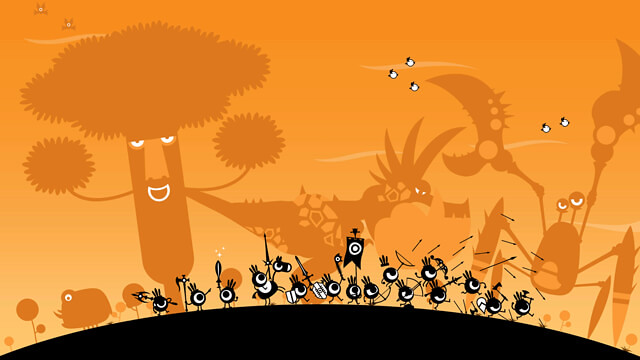
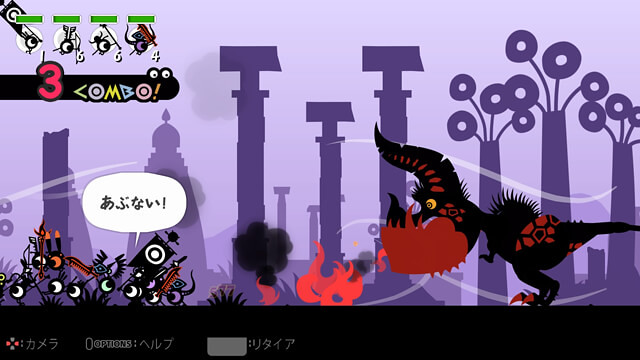
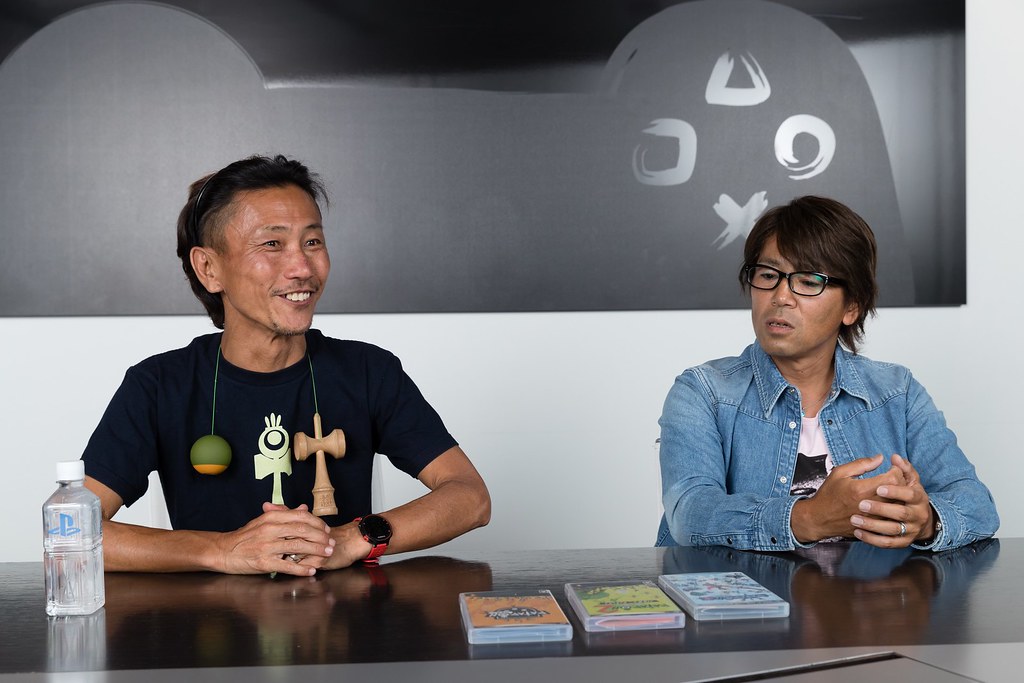
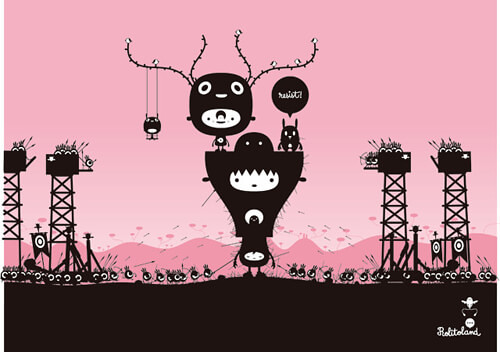
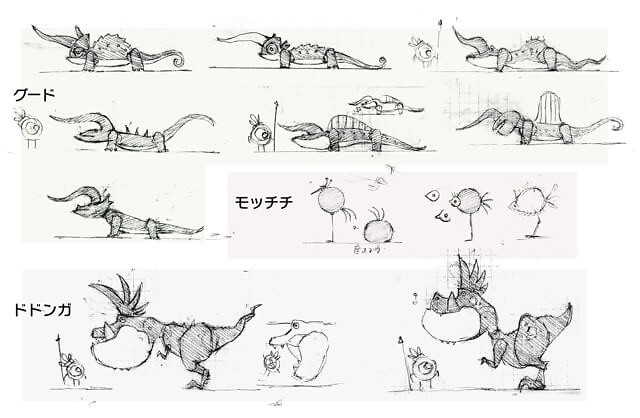
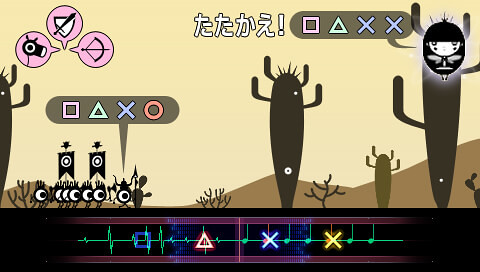

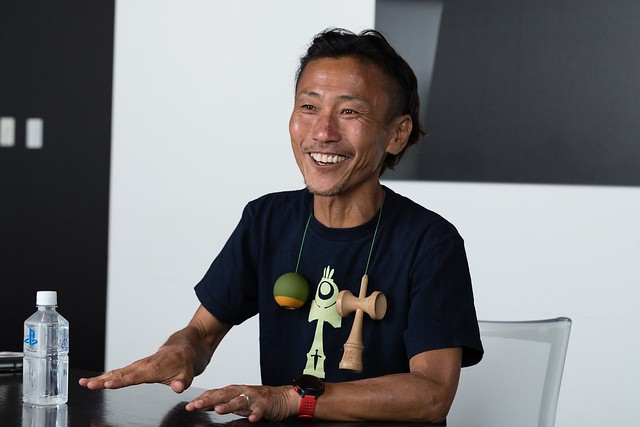

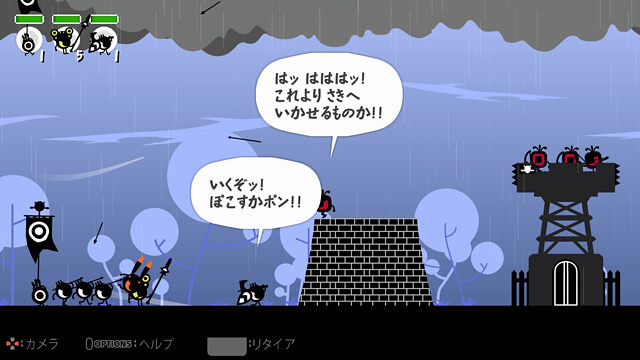
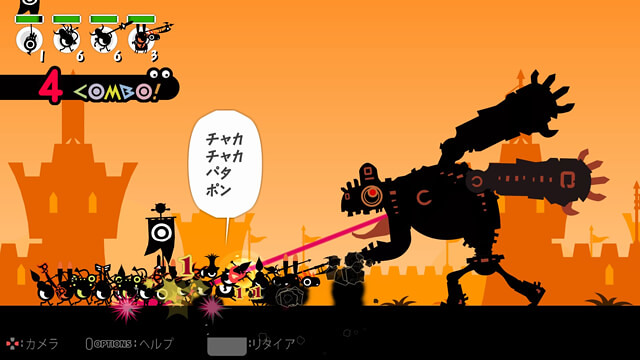
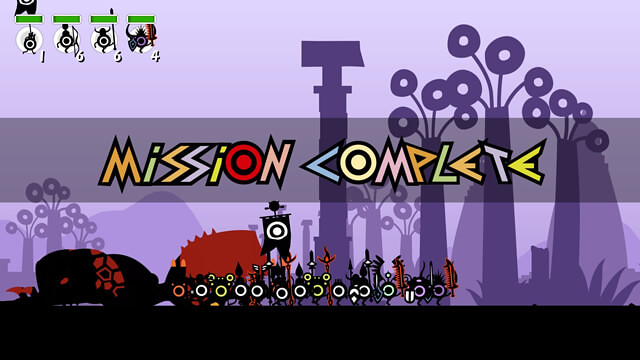
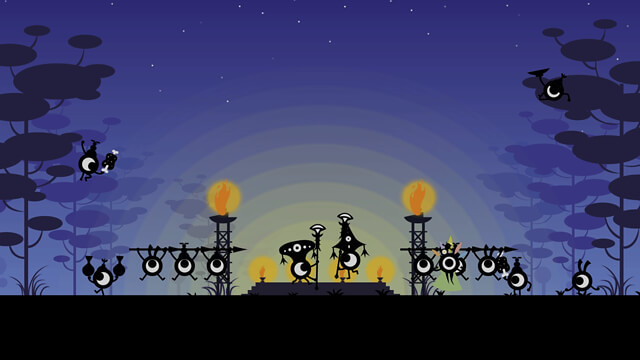









Comments are closed.
133 Comments
Loading More Comments